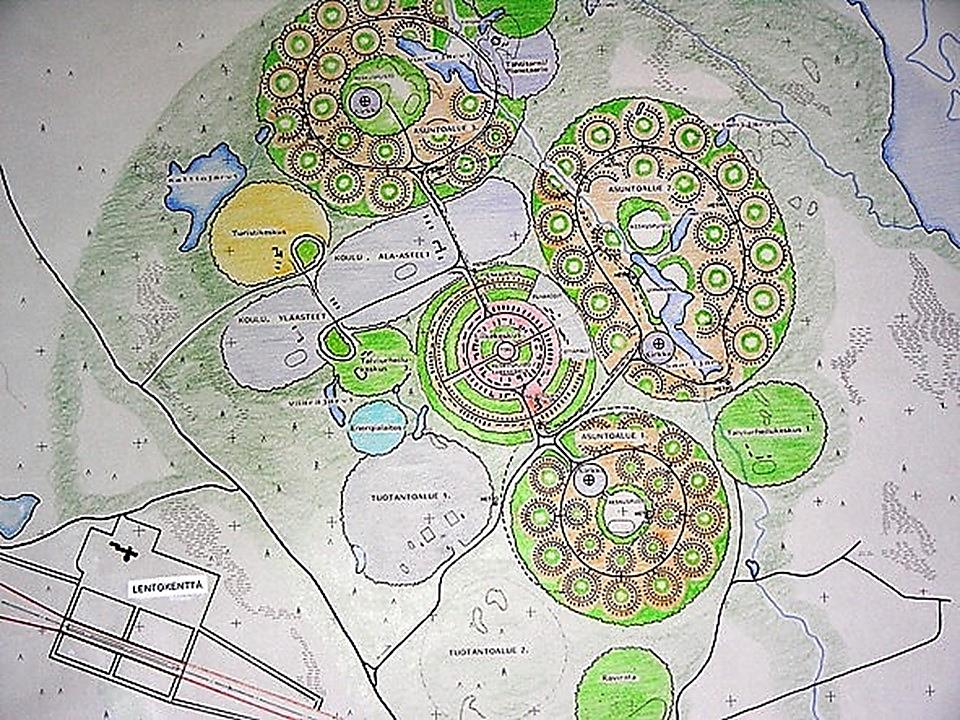Production village
PRINCIPLES OF THE DRAFT VECKULA PROJECT
The starting points of the plan are transport arrangements, nature as a tourist destination and nature-friendly, loose construction. It follows from the principles of production that the community is self-sufficient in energy and production is completely pollution-free. Traffic pollution is implemented on the basis of the city's internal metro and electric car principle. The partly above-ground metro is quite well suited as a form of public transport, as the terrain has cliffs and considerable elevation differences. Along Nelostie, the area on the northern border of the city of Viitasaari is entirely valley-like and there is a view of the southern residential area from the northern residential area. The soil is suitable for construction. The dual traffic arrangement (metro and highway structure) creates space. Tourism requirements have been specifically taken into account by designing an airport on the west side of the city..
The city center consists of the market square and the public buildings around it. This is related to the production and school area by highways and metros, as
well as to three residential areas implemented on the principle of alveolus: the whole area is divided into smaller circles with service points and these in turn
into smaller actual housing communities. Closeness to nature is sought by using an abundance of wood, brick and stone as building materials. Housing
communities consist of about 6,000 detached houses, bringing the total population of the community to about 30,000 people. The total area of the area,
including the expansion funds, is about 50 square kilometers.
The demographic structure is characterized by a large number of children, which is why the need for schools and kindergartens, as well as sports areas and
facilities, has been given special consideration. The city's many special features make it a unique tourist destination, especially for family tourism, which has been taken into account as a separate tourist center. As a model for clean pollution, it is also important as an international research topic. The city's population estimate is based on the number of 5,000 production jobs, which, plus services and family members, means a total of 30,000 inhabitants.
For example, the Kirkniemi fine paper mill, which employs 900 people and whose amount of raw material used as birch would be sufficient for the entire production city, can be considered a point of comparison. The construction of the city has continuously employed tens of thousands of people for more than ten years.
The actual functional, or somewhat similar, production example can be found in the Italian “triangle of chairs”, in the Friuli region of northern Italy, where there are 14,000 chair makers in a community of 40,000 inhabitants, or three times as many Veckula employees in as many as 1,800 small businesses. The city has an estimated cost of 2-3 billion euros and a construction schedule of 10-15 years. As the project is based on the fact that production works from the beginning, the costs of managing unemployment are eliminated and investors both at home and abroad are interested, society loses nothing, and the result is always positive. As start-up and support money, the state would have enough 1-5 per cent of the annual employment money, which in time would be returned to the state as tax and other income.
